Social media has brought about the ability to share images across the world in seconds, something unthinkable a decade ago. There are several major firms who dominate this market – Facebook, Flickr, Pinterest, and Instagram to name but a few.
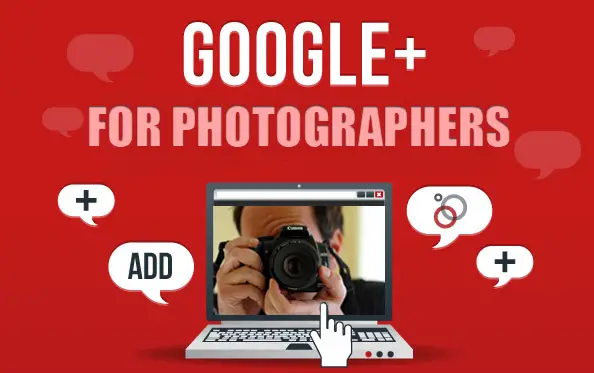
Sleepy old Google+, however, hasn’t had much of a say. With 500 million registered users it’s officially the second most populated social media tool in the world, the only problem with this statistic being how those registered rarely bother to use the service.
However, last week Google caused a stir when they revealed sweeping changes across the Google+ format; a major redesign has been matched with an emphasis on photography and tools capable of manipulating images for users.
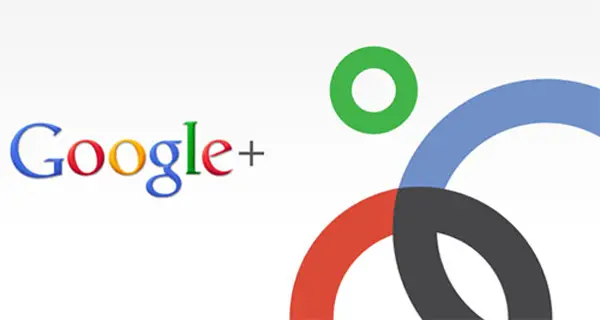
Automatic features are now prevalent; once your picture, or pictures, are uploaded Google+ will work its magic and can create GIFs, major aesthetic enhancements, and a myriad of other photo altering concepts.
Whether Google’s new features defer people away from Facebook and Pinterest remains to be seen, but in the meantime the search engine giant’s latest technology is certainly worthy of a review. There’s no company like it in the world when it comes to throwing resources, technology, and expertise at a project, so where does the Internet and its users stand with Google+’s offering?
New Features
There are a series of new features Google have introduced, all of which heavily emphasise photographs. The company have been brazen about calling Google+ a social media tool, instead referring to it as a “social layer” for all of Google’s services.
Regardless of these statements, it’s clear there has been a major push to make the service more sociable for users. Make no mistakes about it, this is one almighty overhaul of a service which has been almost entirely unused by its 500 million strong registered users.
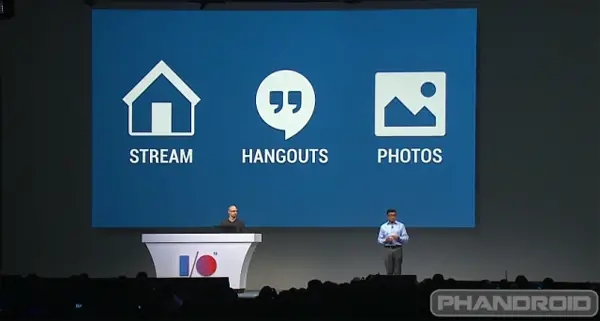
This has been an embarrassing state of affairs for Google, who have now taken the fight to Facebook, Twitter, and Pinterest in an attempt to define G+ as the vital social media experience. Here’s how they’ve gone about it.
Social Updates
News Feed
The layout of Google+ has been completely changed to allow for a cascading News Feed (clearly inspired by Pinterest), which encourages you to connect with Groups, Communities, and other users. There is a new multi-column design (clearly influenced by Pinterest) which makes posts more accessible and immersive.
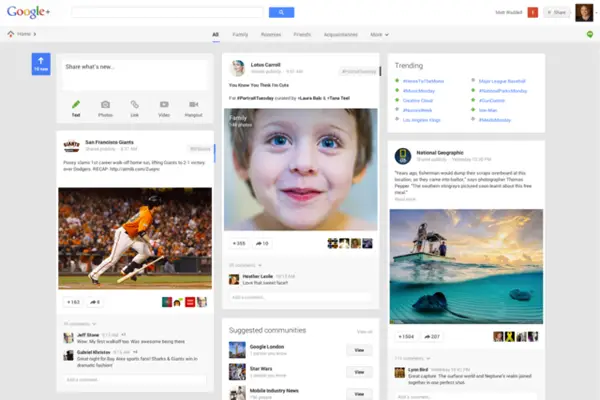
And this is where the first automatic features rears itself up, as Google have introduced a related hashtags policy; here your post will have its content analysed and it will be assigned relevant hashtags (used in the same way as on Twitter).
A user confirms the provided tags and Google+ will go on a search through the World Wide Web to find related posts. This can then be ranked to your social links based on relevance. For instance, if you upload a picture of a bridge it will be assigned to similar posts across the network, consequently showing you people you may want to connect with.
Hangouts
An essential part of Google+, the new Hangouts feature acts as a facilitator for communication with the world. As is explained on the official site, “Hangouts bring conversations to life with photos, and group video calls for free. Connect with friends across computers, Android and Apple devices.”
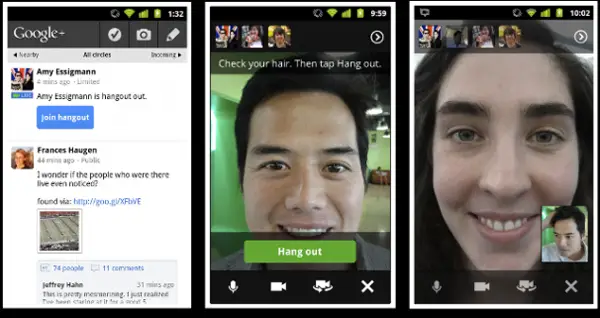
Through the service you can hold group conversations (where you can now share photos in the conversation stream), place free video calls, live-stream from wherever you may be, and add in apps to make your conversations more visually appealing. Importantly you can do this over work computers, Android, and Apple devices, which is a major attempt by Google to make G+ the hub of your online interaction.
Emphasis On Photography
Basic Image Manipulation
By far the most pertinent aspect to Google’s redesign is the heavy emphasis on photography, and the new features begin with familiar basics. There’s nothing new about online image manipulation; enhancements were once the preserve of Photoshop, but now everyone is capable of altering an image they’ve uploaded.
Add into this Instagram and its aesthetic influx of pictures (as well as Pinterest’s objectification of photography), and you have the type of service which is now ubiquitous with online photography.
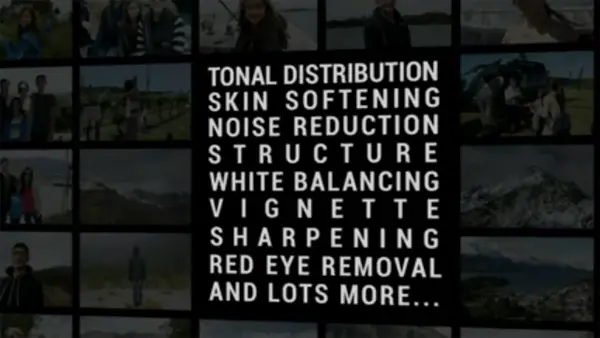
All these kinds of features are available on Google+, along with resizing, cropping, flipping, recolouring, adding clip art, sharpening etc. It’s nothing major, but it is the basis for the more surprising tools in the Google+ canon.
Auto Enhance
This feature can be switched on or off in your settings but it’s on by default. It analyses your photos mathematically and then makes them visually more appealing. It’s pointless pretending to know what’s really going on here, but it seems to seek out low contrast, shadows, and highlights, then it wrings extra detail from those areas, as well as performing a spot of colour correction.
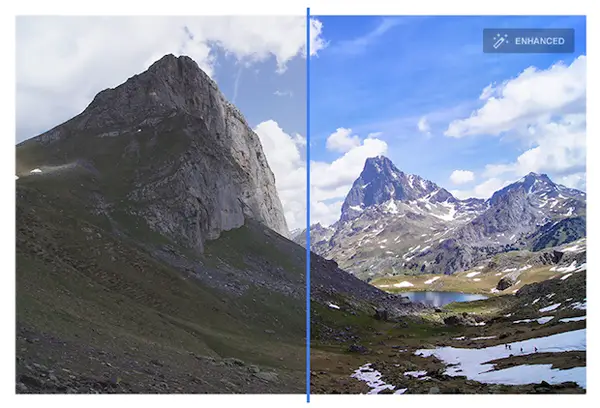
If you want to know if a photo has been enhanced, hover your cursor over it and a magic wand icon will appear in the top left (not all photos are enhanced). As the original isn’t deleted, you can revert by clicking this icon. Auto Enhance certainly works, and it’s subtle, but you’ll need to manually enhance really tricky shots – which is perhaps something of a relief.
Auto Awesome
This somewhat idiotically named feature is a suite with added abilities to do more than the simple alterations of Auto Enhance. Once images are uploaded Google+ automatically detects an appropriate set of pictures and does its automatic thing with them, for instance High Dynamic Range photos are blended versions of the same scene taken several times at different exposures, so more detail is brought out of shadows, highlights, and mid-range parts.
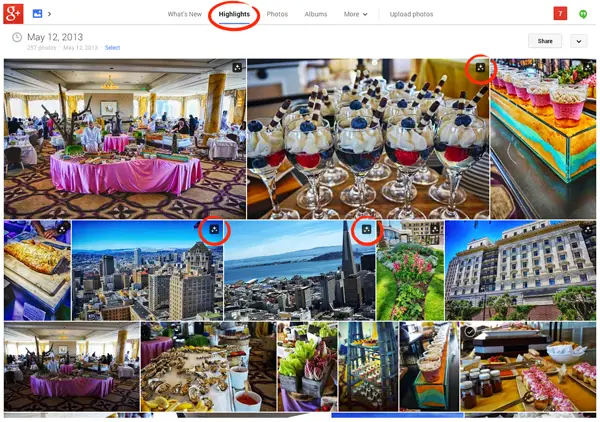
Auto Awesome detects bracketed exposures (say, one underexposed, one normal, and one overexposed) and makes them into one image. There are a number of other enhancements which run with Auto Awesome;
“Gimmick” is too strong a word for these features as they do what they do pretty well. Thankfully the original photographs will remain saved, so you’re not having anything irreversible imposed on you! It’s a pleasant surprise to see the magical star icon appear in your album indicating Awesomeness, although the effects don’t take place immediately.
Often they can take some minutes to appear, but the mind boggles at the amount of processing power required to automatically analyse the constant stream of photographs being uploaded.
Highlight
The new Cloud feature, Highlight chooses the highest quality pictures out of a large selection you may have uploaded. Basically the service, with startling technical wizardry, selects a collection of your “best” images; it will not display blurry photos, under- and overexposed shots, and duplicate images, focusing instead on a smaller number of “quality” photographs. It will also include images you’ve used as background pictures.
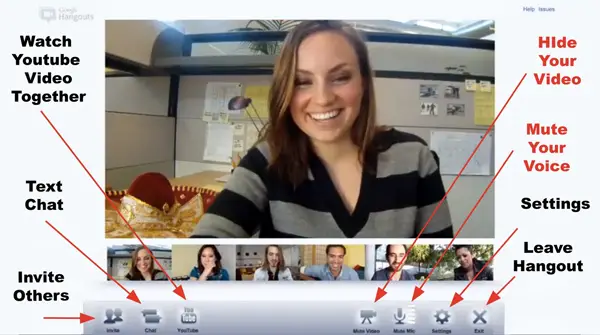
Whilst it’s busy with this it will also recognise any landmarks, people, and the aesthetics of individual pictures and deem them as worthy/unworthy of your Highlight list! It’s a complex series of algorithms which manages this feat, and it’s all geared and getting you to share your best pictures.
What You Can Get From Google+
In some respects taking apart all of these services for individual examination if missing the point of Google’s overhaul; they don’t exist one by one, they are a combined element designed to make the experience as immersive as possible. Drafting in all the latest, and most popular, technological hardware and software to support Google+ is all very impressive, but it’s all geared towards getting users to hang around the service more.
March 2012 social media figures indicate the average Google+ user spent a mere 7 minutes a month using the site, compared to nearly 7 hours on the ever popular Facebook. Whilst Google’s new features are, of course, attempts to sway users away from Mark Zuckerberg’s creation, they do offer some benefits for the user.
Although none of the new features are particularly groundbreaking (for instance, stitching and HDR are common enough to be included on relatively cheap digital camera software, and the Motion animations and GIF creation threatens to be a soon forgotten novelty), they combine with Google’s myriad of services to create a free package which covers some of the most popular websites, including YouTube. It’s a hugely popular site and your account links directly to it, meaning you can share videos at will. However, the principal changes are the much vaunted photo manipulation features.
Auto Enhance, for example, has the potential to make a difference for people with little time (or no experience) in making their pictures look more aesthetically pleasing. Google’s automatic services step in there and offer up a selection of options to make treasured memories look much better.
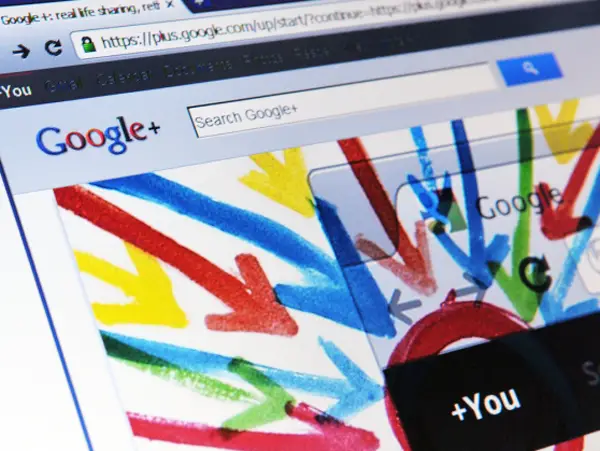
A lot of the time these alterations will be happening without users even realising it; pictures can be uploaded from an Android, for instance, and then Google+ will automatically make it appear like you’re a Photoshop professional. This is merged with the new layout which, frankly, is a steal from Pinterest, but it does work and it’s far easier to navigate through your News Feed, post your content to the world, and interact with people.
It is interaction, however, that Google will have their ever watchful eye on. Hangouts is, effectively, a merger of popular services such as Skype and Gmail Chat (again highlighting how the overhaul isn’t groundbreaking, but a way of connecting useful services together) into one package.
Adding in apps, the possibility to live-stream whilst at events, and the option to upload pictures, and you have a social format which rivals Twitter and Facebook. However, Google’s main problem here will be shifting people happily ensconced on these social media tools onto the complex, and so far out of favour, Google+.
Clearly Google still have some way to go to capture the public imagination, but at the very least it’s difficult to imagine anyone now giving up on G+ entirely. And, if you would like to give it all a try, simply create yourself a Gmail account and get uploading your photographs onto Google+ straight away. As their meta description explains, “Google+ aims to make sharing on the web more like sharing in real life”, so if they can replicate this feelings amongst users across they could well be on to a winner.
About the author: Alex Morris is a writer for a printer inks firm in Manchester, England, where he keeps an eye on social media networks, business, technology, and our HP ink cartridges. He actually likes Google+ quite a lot and would recommend everyone give the new features a go!









Yeah I quite like Google+. These changes. Well I don’t see anyone defecting from Facebook in a hurry. Good luck to Google!
I have been using Google+ for awhile now, and have considered leaving Facebook. Google+ is far more superior than Facebook.
Good article. I think the Guest Blogger should get some credit!
Great article. G+ might be little slower than facebook sometimes but it is superior in so many ways.